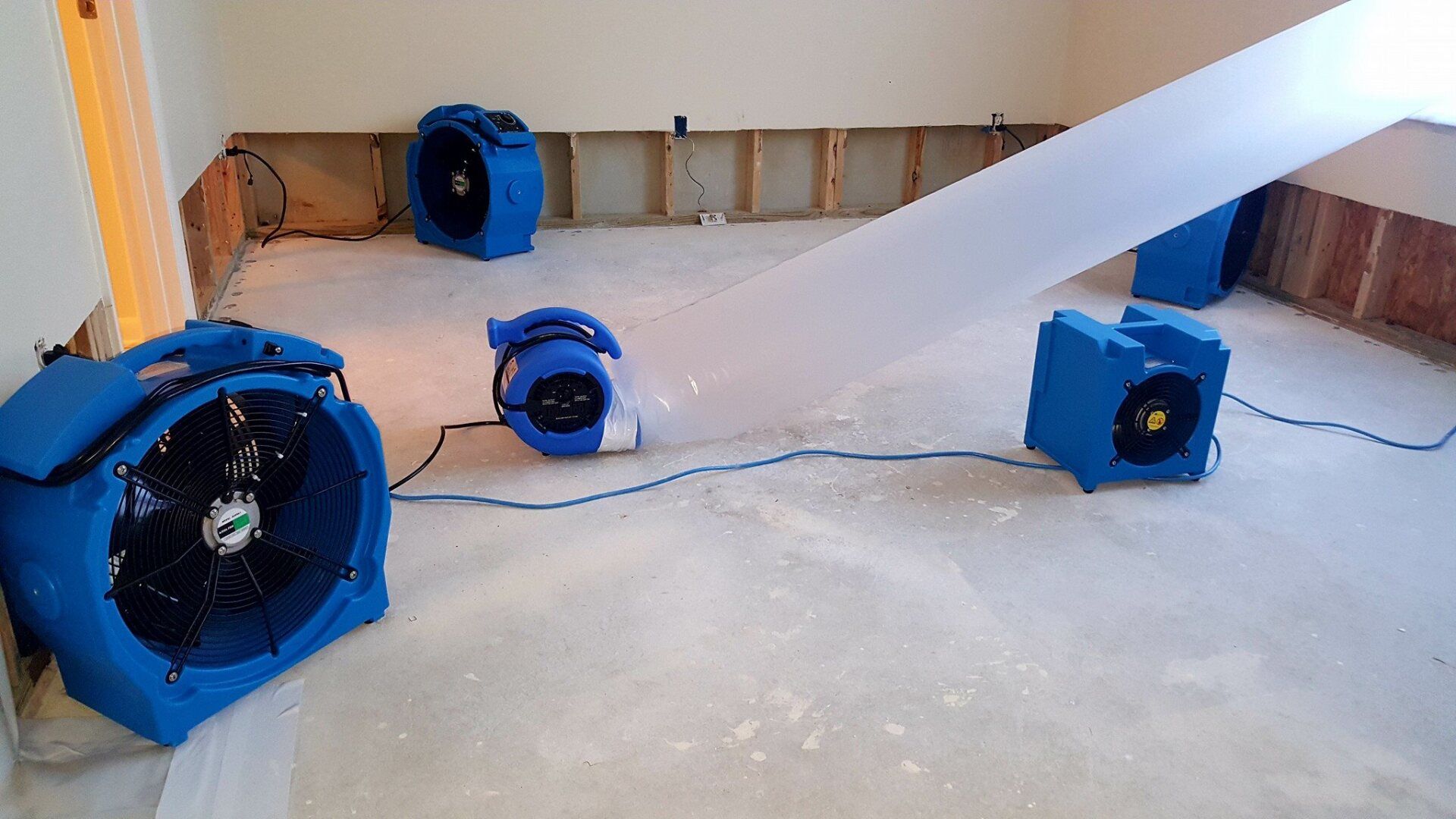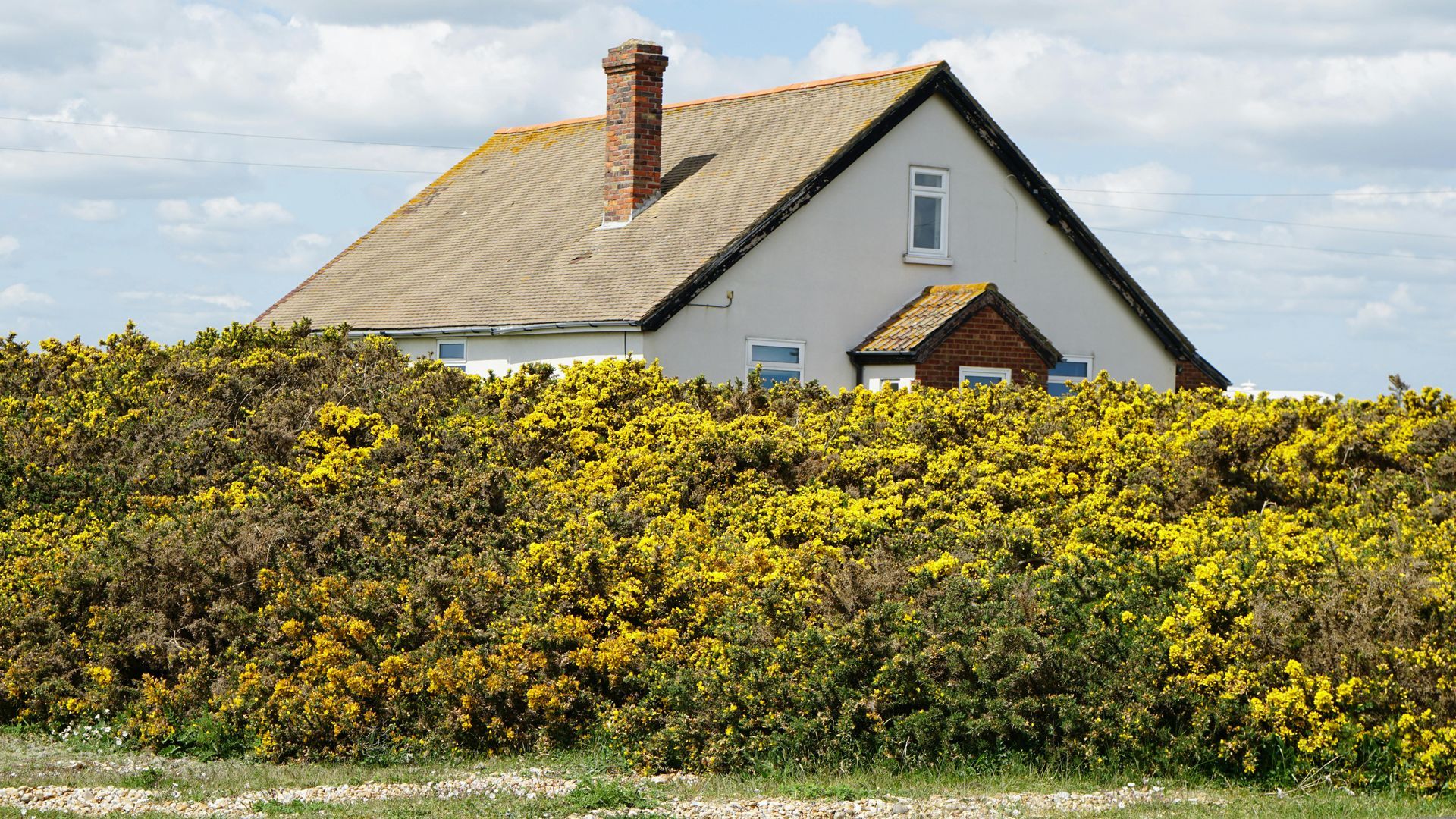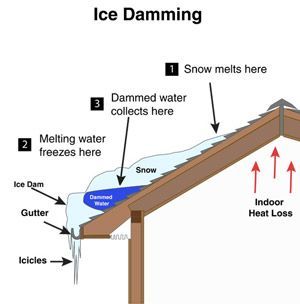What Are Ice Dams and How Can I Prevent Them?
Taylor Faulkner • December 27, 2024

Winter weather can bring all sorts of fun, from snowball fights to sledding to snowmen. Unfortunately, it can also bring unusual circumstances that can contribute to water damage. Ice damming is one of the more common forms of roof damage your house could sustain during the winter weather, and depending on the construction of a home, could lead to water intrusions in some very unsavory places. First and foremost, it is important to understand what ice damming is and how it could impact your home. We will also explain steps you can take to prevent ice dams, and what you can do if you have been the unfortunate victim of water damage due to ice damming. By understanding how ice dams form and how they can affect your home, you can better understand what you’re up against, and how to make sure you don’t have the same problem next winter.
How do ice dams form?
Ice dams are formed when melted snow flows down to the edge of the roof and refreezes, forming an ice barrier that prevents meltwater from flowing into your gutters, instead trapping it on your roof. This occurs when several separate factors occur at the same time. The first ingredient in an ice dam is snowfall. Ice dams form when a significant amount of snow has accumulated on the roof. The next factor is heat escape. Heat from the home can escape through the roof, especially if the attic is not properly insulated or ventilated. This escaping heat melts the inner layers of snow closest to the roof, while the outer layers of snow act as an insulator, trapping the heat. This causes the inner layers of snow to melt and flow down to the edge of the roof. Here is where the third factor comes in: refreezing. Since most homes have a soffit at the edge of the roof, the heat that caused the snow to melt does not reach all the way to the edge, meaning the edges of the roof are colder. This colder part of the roof causes the melted snow to refreeze into ice once it reaches the edge. As this cycle of melting, flowing to the edge of the roof, and refreezing repeats itself, the edges of the roof begin to accumulate a barrier of ice, and as more meltwater flows down the roof, it becomes trapped behind this ice barrier, leading to the name “ice dam”. The frozen barrier of ice at the edge of the roof traps meltwater, and in turn, leads to a backup of water. This water, with nowhere else to go, can then seep under roof shingles and through underlayment, causing a water intrusion into your attic, or even worse, in the wall cavities. Intruding water can lead to water damage, and if left untreated, to mold.
How can ice dams be prevented?
Despite the potential for water damage, there are steps you can take to prevent ice dams from forming in the first place. These solutions include ensuring your attic is properly insulated. This can prevent heat escape, which stops the snowfall on the roof from melting in the first place. Other steps that can be taken are ensuring the attic is sufficiently ventilated. Proper air flow will help to keep the roofs’ temperature consistent and also assist in removing moisture. Making sure to have your roof inspected on a regular basis can help you to identify and address any signs of heat loss or ice damming before they cause serious damage. Finally, there is the option to install heated cables along the edge of the roof, which would prevent the ice from refreezing and forming a dam. These cables, though, should be taken with great deal of consideration, as they can have an impact on your electric bill, and can be costly to install. With proper roof maintenance, and perhaps removing snowfall from the roof, possibly by professionals, ice dams can be prevented, and you can rest easy under a dry roof.
What should I do if ice dams cause water damage to my house?
If you’ve become the unfortunate victim of water damage because of an ice dam, it is important to act quickly. Like any water damage, the longer it sits, the greater the potential for mold to form. There are steps you should take to make sure the damage is mitigated as quickly as possible.
Step 1: Take photos!
The first step is to take photos of any affected or damaged areas you can see. This is a very useful form of documentation for insurance purposes.
Step 2: Call the Pros!
The second step is to call a professional water damage mitigation and restoration company (like us here at Faulkner Restoration!) to stop the source of intruding water and extract any water or moisture from the affected areas. We can assess the scale of damage and inform you of its extent, which can help you determine whether to file an insurance claim. Our team of Pros have decades of experience working with insurance companies, and if you decide to file a claim, we can assist you with that process as well.
Ice dams can be scary, and they can wreak havoc on your home. However, through proper maintenance, they can be avoided. If you have the displeasure to experience ice damming, Pros like us here at Faulkner Restoration are dedicated to helping you navigate the situation and get your home back to its dry, cozy condition. If you’re experiencing water damage, call the experts at 317-782-9999.
Contact Faulkner Restoration Today!
Faulkner Restoration will do everything we can to ensure your experience with us is excellent.
Request A FREE Estimate
Request a Free Estimate Form
Checkout Recent Post

3 Common Water Damage Myths Homeowners Should Stop Believing Water damage can quickly spiral from a minor issue to a major headache if you fall for common misconceptions. Homeowners often believe myths that lead to delayed repairs, mold growth, and expensive fixes. At Faulkner Restoration, we’ve seen firsthand how misinformation can turn a small leak into a costly disaster. From thinking minor drips will dry on their own to assuming bleach eliminates all mold, these myths put your home and health at risk. Let’s debunk three widespread water damage myths with expert insights to help you protect your property. Read on to learn the truth and discover how Faulkner Restoration can restore your home quickly and safely. Myth 1: Small Leaks Don’t Require Professional Help A dripping faucet or a small puddle under the sink might seem harmless, tempting many homeowners to grab a towel and move on. Unfortunately, even minor leaks can cause significant damage by seeping into walls, floors, or insulation. Within 24-48 hours, trapped moisture can foster mold growth, which not only weakens your home’s structure but also poses health risks like allergies or respiratory issues. Ignoring these small leaks often leads to costly repairs that could have been avoided with early intervention. At Faulkner Restoration, our certified technicians use advanced tools like moisture meters to detect hidden water and assess the full extent of the damage. By addressing leaks promptly, we prevent mold and structural issues, saving you time and money. Don’t underestimate a small leak’s potential to cause big problems. Contact us for a professional assessment to ensure your home stays safe and dry. Myth 2: Bleach Kills All Mold After Water Damage When mold appears after a water leak, many homeowners turn to bleach, believing it’s a quick fix to eliminate the problem. While bleach can kill some surface mold on non-porous materials, it’s ineffective against mold hidden in porous surfaces like drywall, wood, or carpeting. These deeper spores continue to thrive, spreading through your home and potentially causing health issues like asthma or allergic reactions. DIY attempts with bleach can also worsen the problem by spreading spores or exposing you to harmful toxins. Faulkner Restoration’s certified mold remediation experts use industry-standard techniques, such as containment barriers and HEPA filtration, to safely remove mold and prevent its return. Our process ensures that all affected areas are thoroughly treated, protecting your home and family. Don’t risk incomplete mold removal—trust our team to handle the job with precision and care, restoring your home to a safe, mold-free condition. Myth 3: Drying Wet Areas with Fans Is Enough After a flood or spill, many homeowners set up household fans, thinking they’ll dry out the damage and prevent further issues. However, fans alone can’t remove moisture trapped in carpets, subfloors, or walls, where it can linger and cause mold growth or structural damage. This hidden moisture often goes unnoticed, leading to warped floors, musty odors, and costly repairs down the line. Relying solely on fans can give a false sense of security while the real damage festers. At Faulkner Restoration, we use industrial-grade dehumidifiers and air movers to thoroughly dry affected areas, ensuring no moisture remains to cause problems. Our professional drying process is fast and effective, preventing mold and preserving your home’s integrity. Don’t let hidden moisture compromise your property—call Faulkner Restoration for expert drying solutions that restore your home to its pre-damage condition. Don’t Let Myths Flood Your Home Believing water damage myths can lead to expensive repairs, health hazards, and unnecessary stress. By understanding the truth about small leaks, mold removal, and proper drying, you can make informed decisions to protect your home. Faulkner Restoration is here to help with 24/7 water damage restoration services tailored to your needs. Whether you’re facing a minor leak or major flooding, our certified team is ready to respond. Contact Faulkner Restoration today for a free inspection and let us bring your home back to safety with professional, reliable solutions.

Applying the precepts of structural drying to your home is a unique process, as every structure is shaped differently, and will dry at a different rate. There is no one single magic-bullet formula for drying, but by meeting guidelines and following protocol, both residential and commercial structures can be dried effectively and efficiently. In this blog post, we will go over some of the basic principles of applied structural drying, and how these pillars affect the drying process. Keep reading, and perhaps you'll learn something new and interesting!

Summer fades fast, ushering in cold air and hidden risks like frozen pipes or snow-damming on your roof. Winter brings more water damage claims than any other season, but by acting now, you can prepare accordingly and set yourself up for success. Routine maintenance-checking your HVAC, roofs, and chimneys- helps prevent costly repairs, and keeps you in your home. The critical maintenance you need: HVAC HVAC is a critical system for your home, and it’s important to maintain it regularly, even without the threat of water loss. By keeping your HVAC system in good working order, you prolong the lifetime of your equipment and protect your home from potential water intrusion at the same time. Swap out your dirty air filters to boost airflow, and to prevent mold from trapped moisture. Make sure your condensate drains are clear to avoid leaks. Vacuum your vents to reduce dust and schedule a professional inspection once a year before the winter freeze, to catch any issues before it becomes a problem. These basic steps can keep your HVAC running smoothly and prevent water or mold damage. Contact your local HVAC professional for expert assessments. Make sure you're covered! Roofs are the next point of focus. Your roof is your home’s first defense against the elements, and it’s critical that it be maintained correctly to prevent professional repairs. Do not attempt to get on to your own roof; it’s better to leave any hazardous tasks to trained professionals. Make sure any roof inspector is checking for loose or damaged shingles, and that the flashing is intact. In colder months, a phenomenon known as ice-damming can occur, where meltwater refreezes on the roof, causing pools of water to form and slowly seep into the roof. Water damage on the roof can cause water and mold damage throughout the entire house, especially if the water travels down through the insulation of the walls. Roof-related water damage often migrates to other rooms in the house, multiplying the cost of repairs. Let's keep it clean. Finally, make sure to inspect your chimney, if your home has one. Look out for cracks or damaged caps, and call a professional chimney sweep to remove flammable creosote. Creosote is a remarkably hazardous chemical that accumulates in chimneys, and is extremely flammable, so regular cleaning is vital. Check the flashing where the chimney meets the roof to stop water intrusion from the outside. Check the flue for proper ventilation to avoid moisture buildup. These steps can prevent a house fire or water damage and keep your home cozy and safe. Maintain today to avoid repair tomorrow. Proactive maintenance now is the best way to prevent a costly repair this winter. Schedule professional inspections where they are needed to protect your home. Remember that maintenance is always cheaper than repair. If you’re in need of a restoration professional, give Faulkner Restoration a call today at 317-782-9999.


